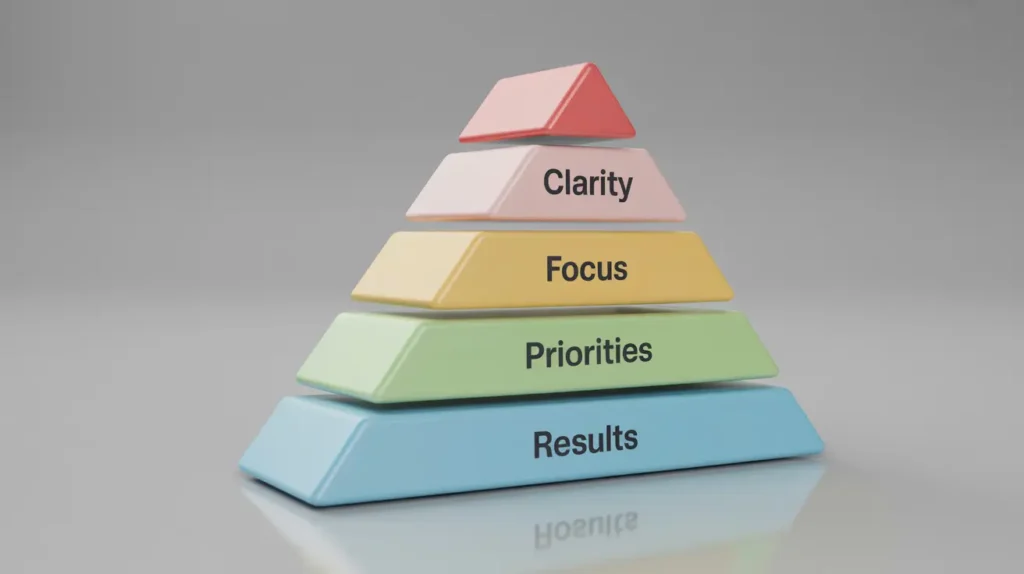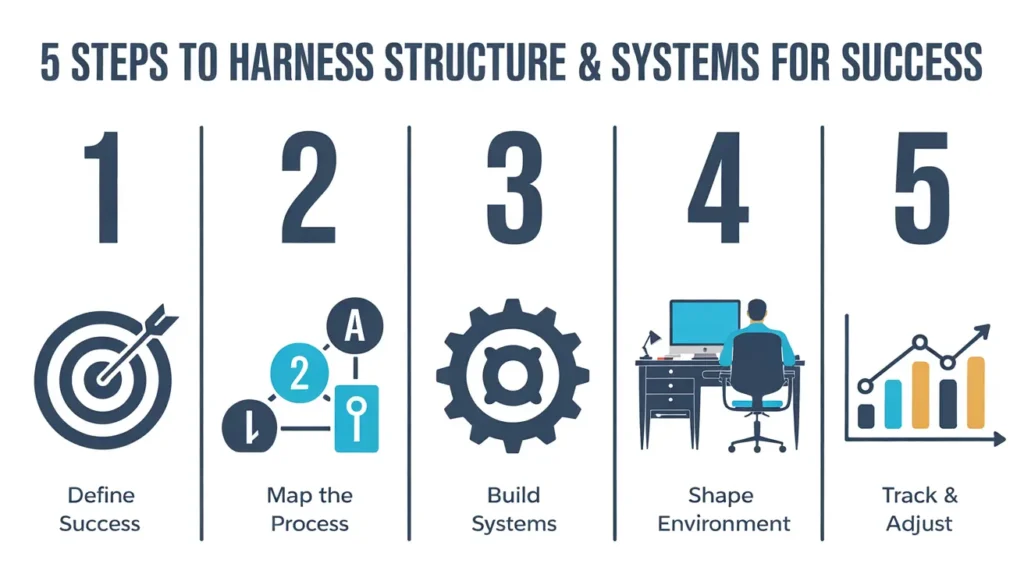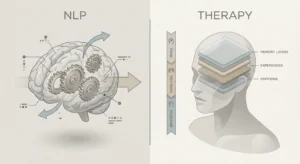When people think about what sets top performers apart from those who lead, influence, and scale their businesses, the answers are usually the same: mindset, vision, confidence and maybe even charisma.
But here’s the truth: Success is built on structure. Sustained by systems.
Behind every breakthrough, every high-impact leader, and every results-driven business, there’s a repeatable framework, a method, rhythm, and design that works every single time.
Success isn’t about doing more. It’s about doing the right things in the right order, consistently with a structure that keeps you focused and systems that make success sustainable.
This guide shows you how to use structure and systems to create momentum, multiply your impact, and build success that lasts.
Why So Many Hardworking People Stay Stuck
Hard work isn’t enough anymore. Without clear systems and structure, even the most motivated professionals end up overwhelmed, inconsistent, and frustrated.
No Clear Framework
When there’s no structure, you’re constantly guessing what to do next.
Every decision feels heavy, priorities blur, and progress slows.
Relying on Motivation Alone
Motivation is temporary. It gets you started but can’t keep you going. Systems create consistency; they work even when energy and willpower fade.
No Repeatable Process
If you’re reinventing the process every time, you waste energy on setup instead of execution. Systems simplify things by making success predictable.
Constant Overwhelm
Without structure, everything feels urgent. That leads to unfinished projects, poor results, and burnout.
What Structure Really Means

Structure isn’t about control, it’s about clarity. It organizes your time, energy, and focus so you can prioritize what matters most.
Structure answers questions before they cause stress:
- What needs to happen?
- When should it happen?
- In what order?
- What gets your attention and what doesn’t?
With the right structure, ideas turn into action. Instead of boxing you in, structure frees you to focus on results.
What Systems Actually Do

A system is simply a repeatable process that delivers consistent results. It doesn’t need to be complicated; it just needs to work.
Examples of powerful systems:
- Writing for 30 minutes every morning
- Following the same onboarding process for each new client
- Using a checklist for weekly planning
Systems reduce decision fatigue and give you confidence because the process works every time. It’s the difference between hoping for success and knowing exactly how to get there.
How to Harness Structure & Systems for Success

You don’t need to overhaul your entire life, just make a few intentional changes.
Follow these five steps to build your own success framework:
Step 1: Define What Success Looks Like
Be specific. Instead of “I want to be more organized,” say: “I want a weekly planning system that keeps me focused on three priorities.”
Step 2: Map the Process
Break big goals into small, actionable steps. When you understand the sequence, the structure forms naturally.
Step 3: Turn Steps into Systems
Turn your steps into repeatable actions:
- Automate recurring tasks
- Create templates for repeated work
- Schedule routines to reduce decision-making
Step 4: Design Your Environment
Your environment should make success easy and obvious:
- Use visual reminders
- Remove distractions
- Set up tools and systems where you need them
Step 5: Track, Review & Adjust
Your systems will evolve as you grow.
Check weekly:
- What’s working?
- What’s slowing you down?
- Where can you simplify?
Adjust the system, not the goal.
Mindset Shifts That Make It Work
Even the best systems fail without the right mindset. Here are three powerful shifts to adopt:
- Progress Over Perfection: Start where you are. Small, messy action beats waiting for flawless plans.
- Design Over Discipline: You don’t need more willpower, you need systems that make consistency automatic.
- Small Wins Compound: A five-minute habit done daily beats a perfect system you only use once.
Key Takeaways
- Success comes from structure and systems, not endless hustle.
- Structure creates clarity, focus, and direction.
- Systems make progress sustainable and repeatable.
- Start small: define goals, map steps, and automate routines.
- Consistency beats intensity every single time.
FAQs
1. Why are structure and systems essential for success?
They reduce decision fatigue, create consistency, and make results predictable even when motivation fades.
2. Can I succeed without systems?
Yes, but it’s harder. Without systems, you rely on willpower and memory, both of which are unreliable long-term.
3. How do I start creating systems if I feel overwhelmed?
Start small. Choose one area of your life or business and create a simple, repeatable process. Then expand gradually.
4. Do systems limit creativity?
No systems free mental bandwidth, allowing you to focus more on strategy, problem-solving, and innovation.
5. How long does it take to see results?
Most people notice progress within 2 to 4 weeks once they consistently follow a structured system.





